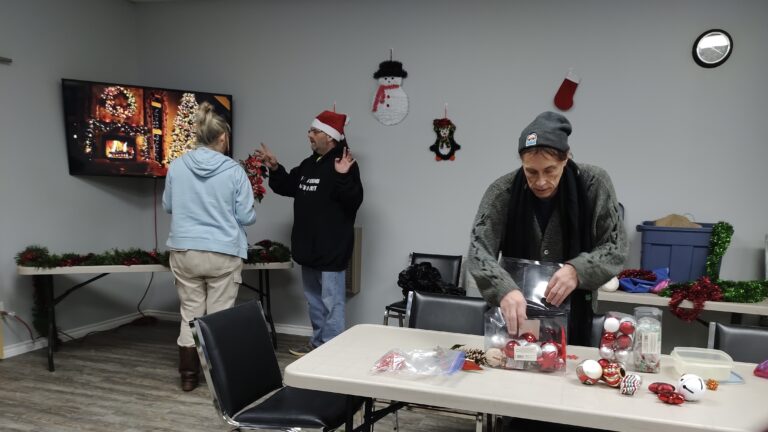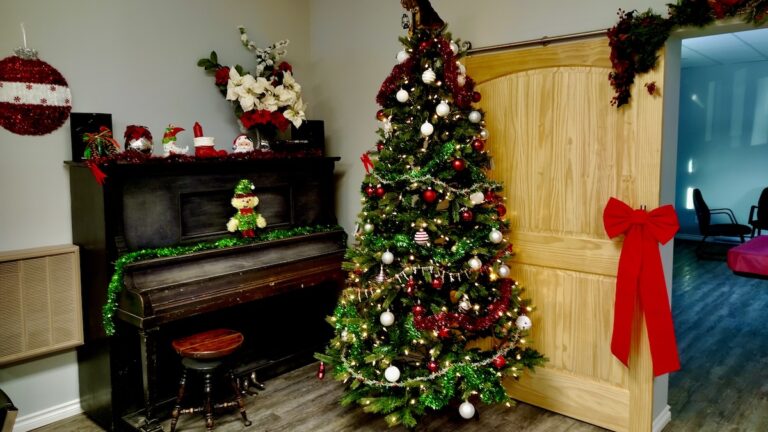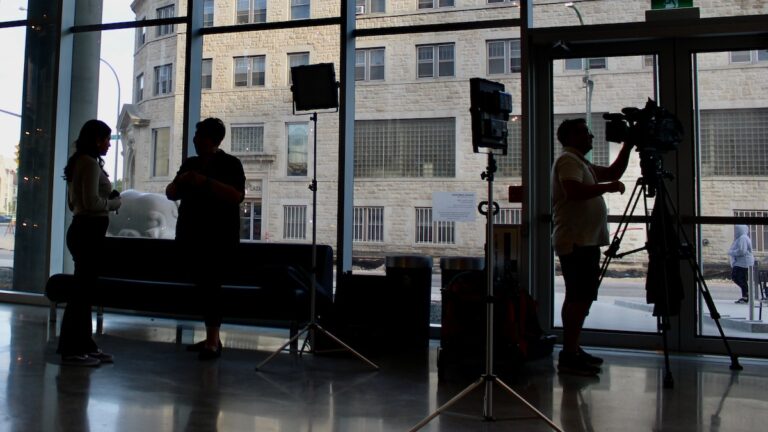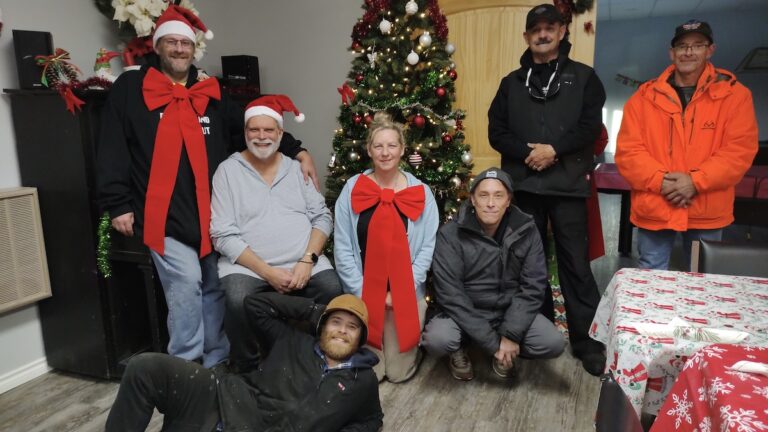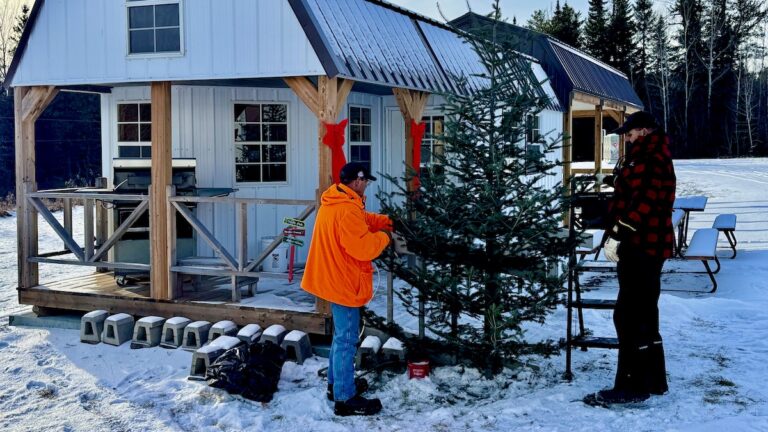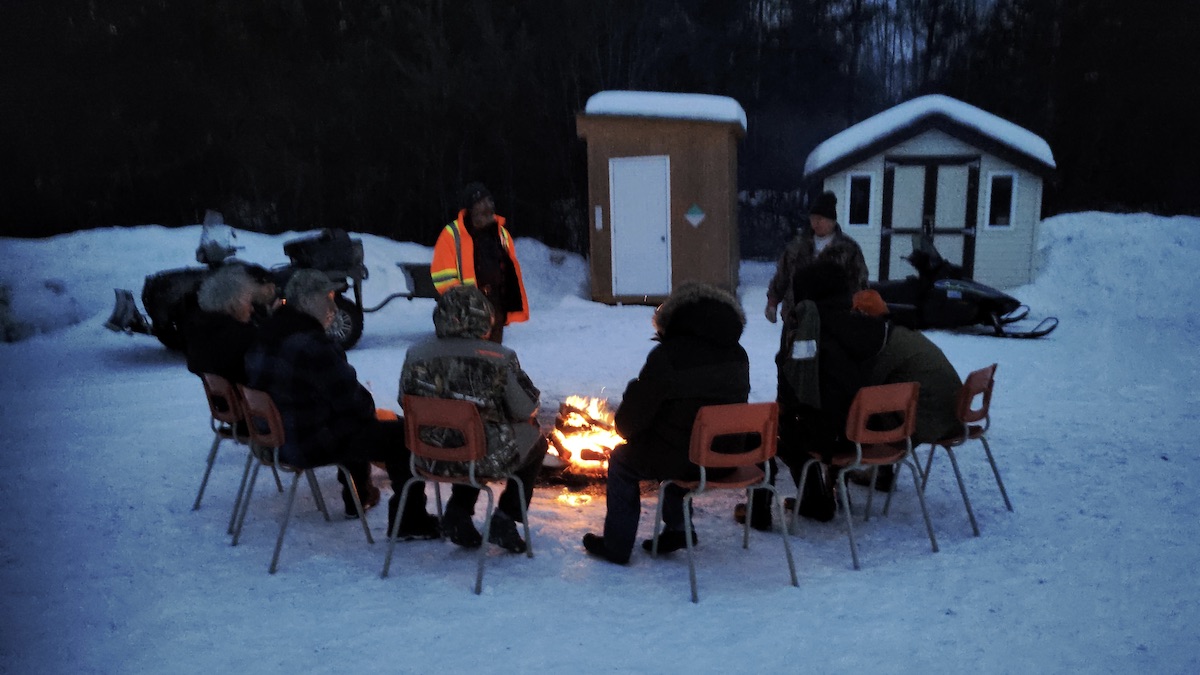
There's a need for structured community programs and activities that bring people together, such as this event from February for Family Day. It brought community together outdoors, away from boardroom tables and had people sitting around the fire. These were the best conversations. Photo: Terri Bell
This week, we introduced the basic concepts of hosting community dialogue sessions. Why hold community dialogue sessions? Simply put, it helps us understand the pulse of our community. Here is a record of some of the key outcomes our project discussed this week from our conversations.
A Stronger Sense of Identity: Connecting with Heritage
There is a growing disconnect between young people and their traditional knowledge. As many children and grandchildren attend school in Southern Ontario or Manitoba, there’s a growing need to encourage a sense of connection to their roots. We heard that we can’t build a healthy community, or address the root causes of community issues without a strong sense of identity—knowing who we are and where we come from. It’s also important that communities have the tools, and skills, to tell their own stories.
This means a huge need to encourage pride in place. To address this, we need more programs during the summer when youth are home. The loss of language, such as Cree and Inuktitut, is a major issue, and many feel a deep urgency to pass on stories that are not being told enough.
There is a vast amount of history in Northwestern Ontario that could be explored through new and creative dialogues this summer. We could use the arts not just for film and video, but also for hands-on, archival projects, like visiting historical sites or learning how to use resources like the Hudson’s Bay Company Archives. There are a lot of old photos, and stories that should be told before the oldest members of the community pass away, but little capacity to do so. We need to see training and opportunities to build up the ability to deliver and sustain these kinds of programs.
Embracing Digital Tools and Infrastructure
The conversation also turned to the need for better digital infrastructure. Many expressed a desire to move beyond old, “static” websites to platforms like WordPress that are simpler to manage.
There’s a clear interest from youth and community members in learning how to post pictures and share community history, but the current process is too time-consuming and difficult.
A key goal is to empower community members with the skills to manage their own online presence. Some youth programs and organizations have been learning to use AI tools for repetitive tasks like taking meeting minutes and planning, and there’s a great opportunity to explore how regional AI research could be used to build local capacity.
Connecting people with these digital tools is essential for sharing our stories and history more effectively.
Fostering Creativity through Arts and Crafting
Finally, we heard a strong interest in expanding opportunities for music and crafting. Many people expressed a passion for crafting but feel disconnected from resources like arts council funding. There is a clear desire to learn how to organize larger, more connected events that bring people together through shared creative activities.
We also revisited a key takeaway from the original Arts Incubator pilot program: the interest in taking arts out onto the land. Ideas like plant walks were very popular, offering a way to learn about the uses and history of local plants, capture them through photography, and connect with the land in a meaningful way.
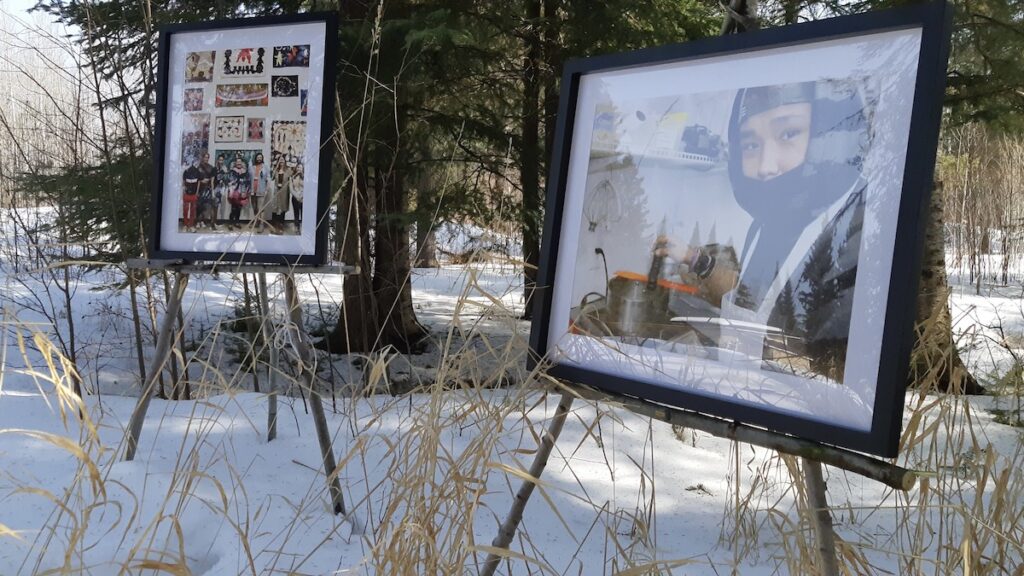
Rebuilding Connection in a Post-Pandemic World
The pandemic has left a lasting impact on our community, and our dialogue highlighted just how disconnected things have become. Before 2020, there was a greater capacity to deliver and sustain recreational and arts programs, but that has since waned. The challenge now is to rebuild that foundation. There’s a growing need to learn how to deliver more structured programs that can be sustained over the long term. While recent arts programs have been small, they have been successful, proving that the interest and talent are here. The question now is how to build on that success in a way that is resilient to future disruptions.
The Need for Capacity Building
A key part of rebuilding is addressing the lack of capacity for administrative tasks. The energy and creativity for new programs are abundant, but many community groups and volunteers lack the skills needed to turn these ideas into reality. Specifically, there’s a huge need for training on things like submitting funding proposals. Securing grants is often the first step to expanding a small program into a sustainable one, but the process can be intimidating and complex. By teaching community members how to navigate this system, we can empower them to access the resources they need to bring their visions to life and ensure our arts and recreation programs not only survive but thrive.

